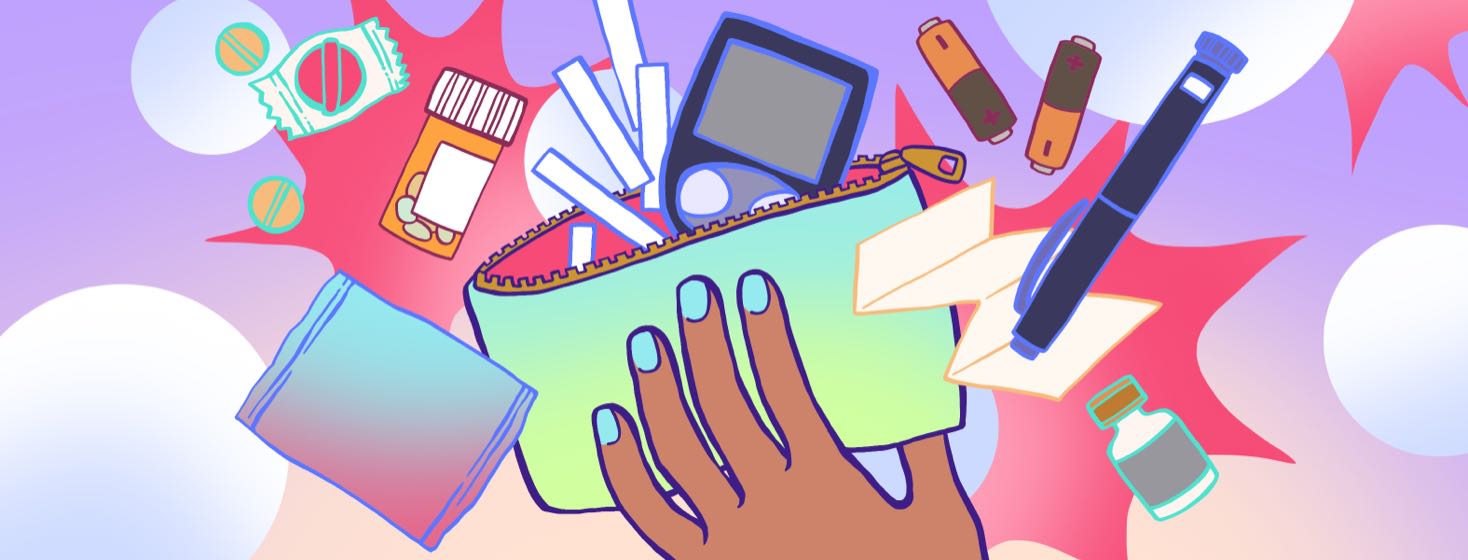Be Prepared With a Diabetes Emergency Kit
It's always useful to be prepared for any emergency. As someone who loves having helpful kits handy and who has diabetes, I know how important it is to have a diabetes emergency kit nearby.
What is a diabetes emergency kit?
A diabetes emergency kit is a bag filled with useful items you can personalize to your needs and always have handy. It's great for when you're on a road trip, spending the night away from home, or during natural disasters like a storm.
How do I get started with making a kit?
These diabetes emergency kits are easy to set up. You will first need to get a medium-sized bag that will be manageable and easy to carry. It doesn't have to be large and take up a lot of space. Something that holds the basics is big enough. Besides, you don't want something cumbersome which takes up extra space in your car or home.
What items should be in a diabetes emergency kit?
Here are some critical supplies and items to include in your diabetes bag.
Extra medicine
Not everyone thinks of having extra medication on hand. But let's say you have a situation where you can't get to your medicines, and you'll need them.
For example, I went through Hurricane Michael in 2018, a category 5 storm. Thinking about having enough medicines was the least (but the most important) of my worries at the time. I didn't think about my medications until I needed them. So having a 7-day supply of extras is a great idea.
A cooler bag or ice pack
Find an insulated bag if you use medication that needs to be refrigerated or stored at a cool temperature. It can keep things like insulin at the optimal temperature. This way, you're well-prepared if you need to leave at a moment's notice. You can have peace of mind that your medicines will be stored properly. If possible, keep an ice pack in the freezer to throw into the bag in case of an emergency.
For obvious reasons, you can't simply keep refrigerated items in a regular bag in a hot car. But having the other tools makes it easier when you need the bag. If you don't need refrigeration, you can have your bag already usable in another place, such as your vehicle.
Batteries and other supplies
You'll want to keep extra batteries on hand if you use an insulin pump. Sometimes you need extra infusion sets, reservoirs, syringes, and vials. Keep those "extras" packed in your diabetes emergency kit.
Written information
Create a list of essential health information in the bag, including your contact information, emergency contacts, prescriptions, other health conditions/health history, and any allergies.
Snacks
Some snacks may not last forever, but glucose tablets or hard candy can last a long time in the emergency kit in case you experience hypoglycemia (low blood sugar) unexpectedly.
Preparation is key
The whole point of having this emergency kit is to have what you need when you need it - especially when the unexpected happens. Consider creating multiple emergency packs if needed. For instance, you can keep one in your car and another in your home or suitcase.
It can be hard to have all of these supplies ready and available at a moment's notice. But even if you can't pack extra meds or keep everything cold, you can still pack some of the essentials like test strips, candies, and a glucose meter.
Does anyone else have a diabetes emergency kit? What do you have in it?


Join the conversation